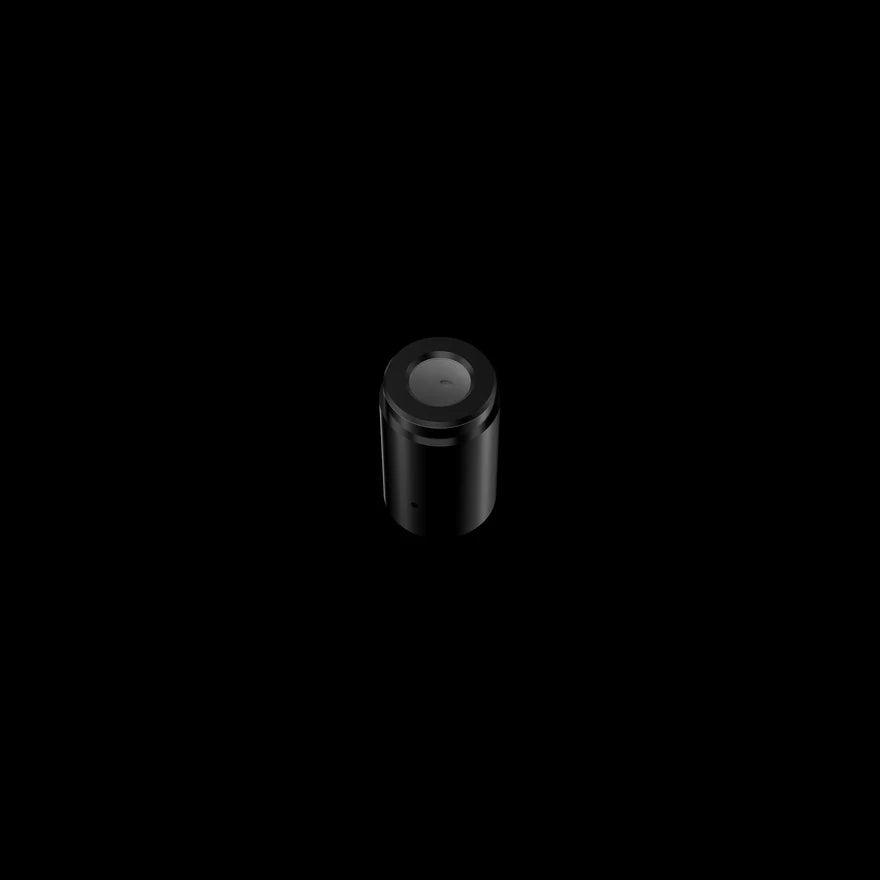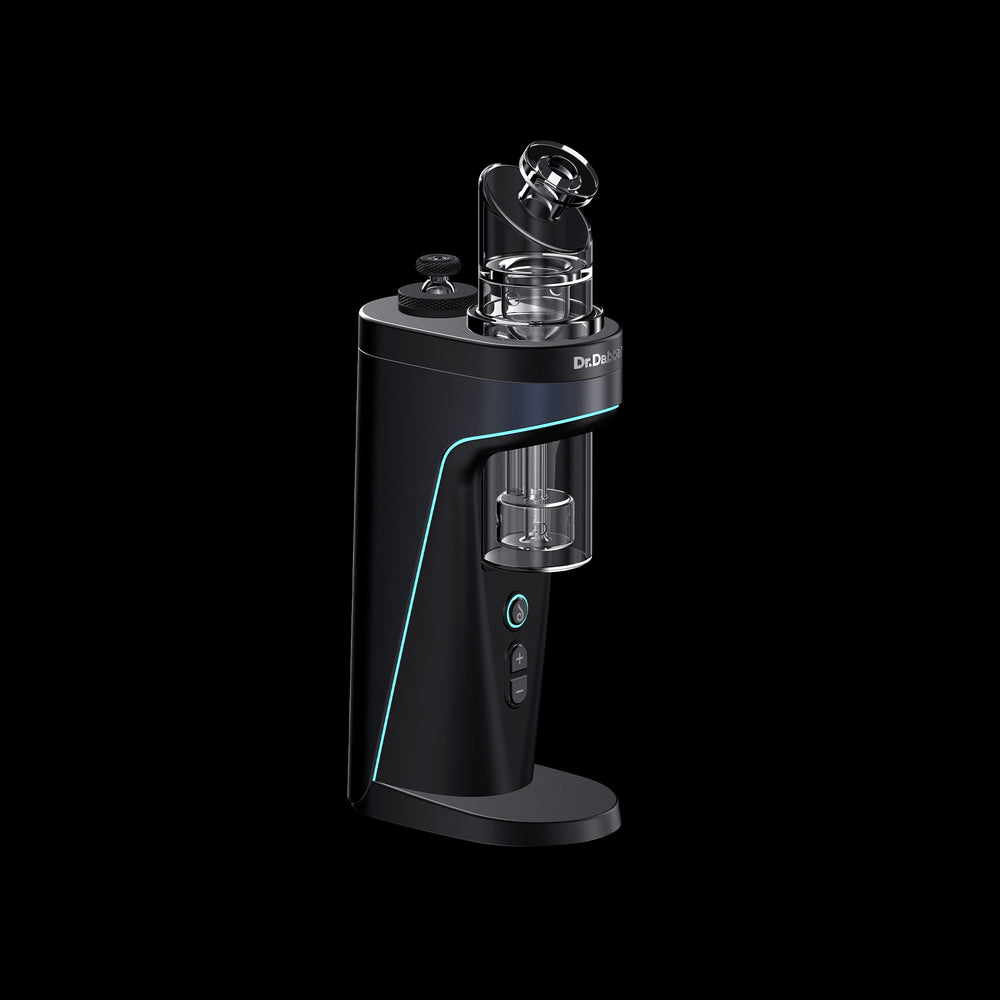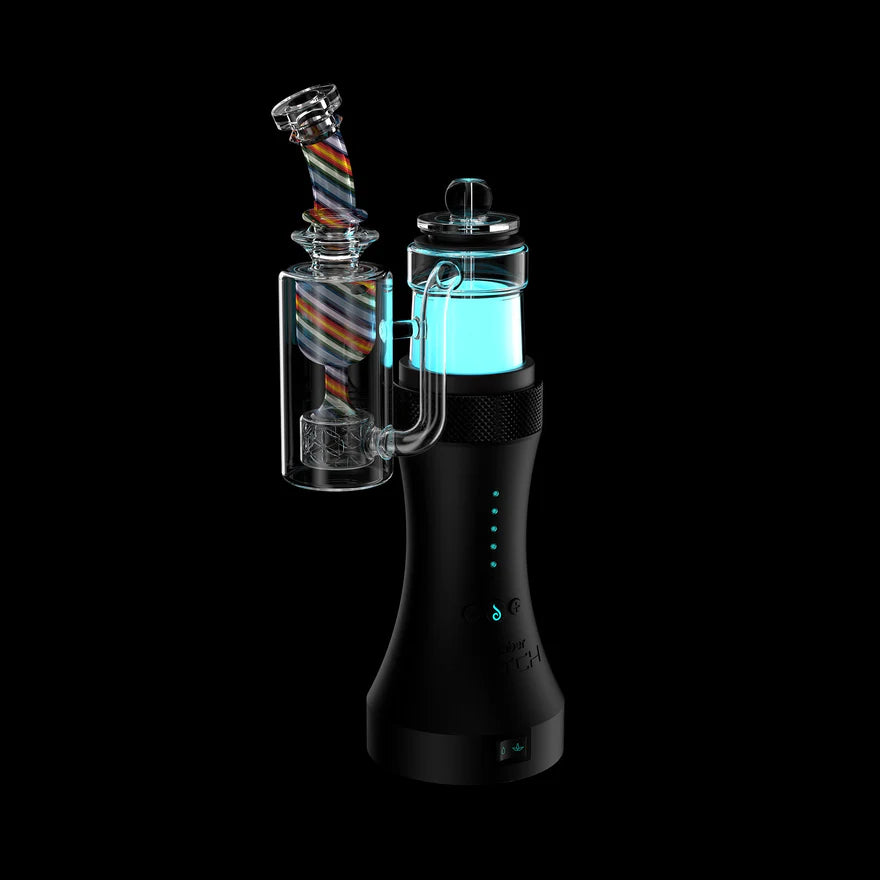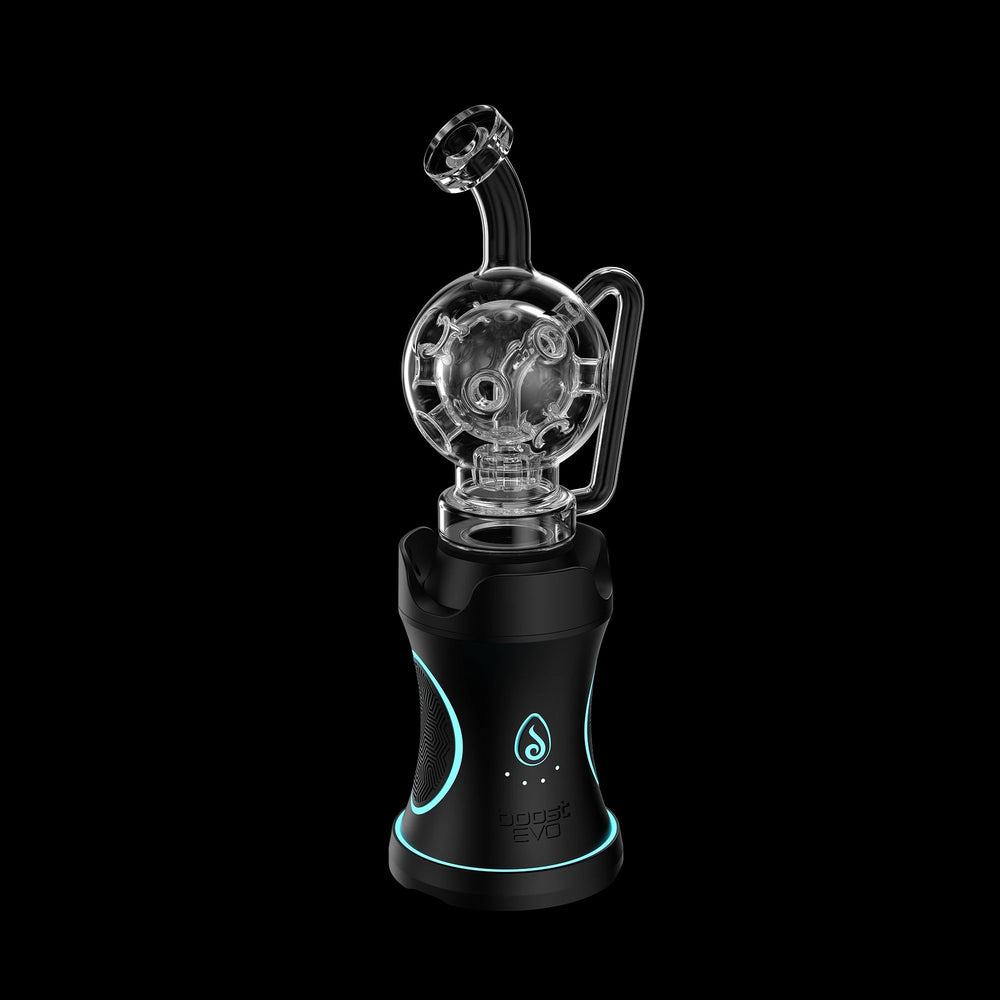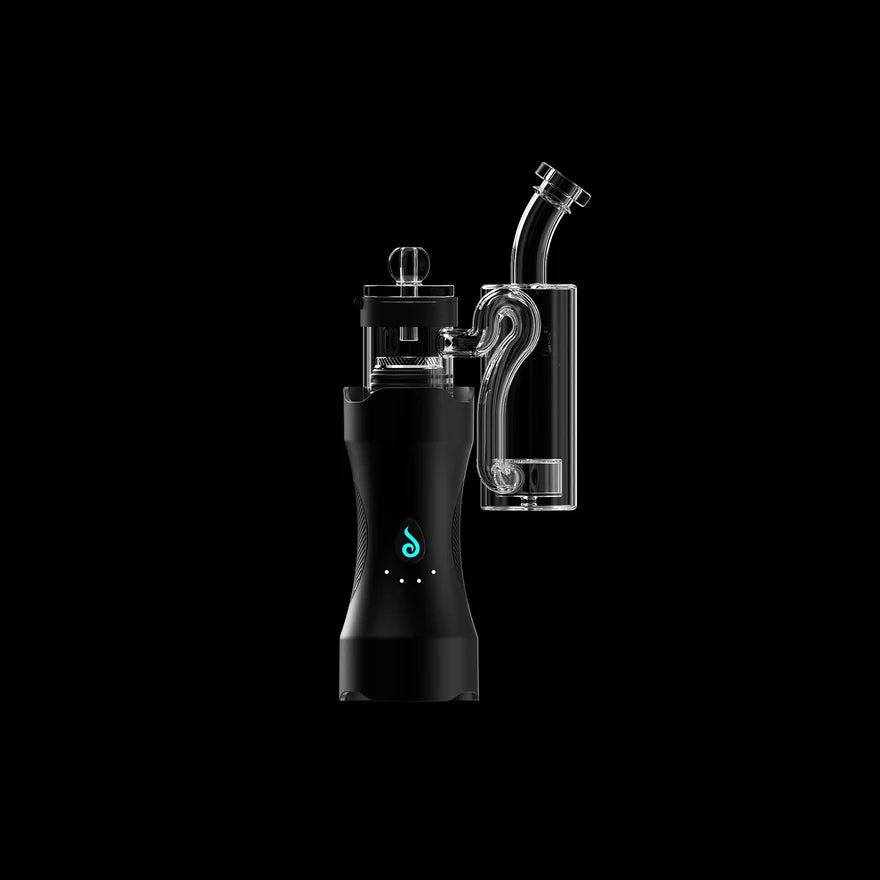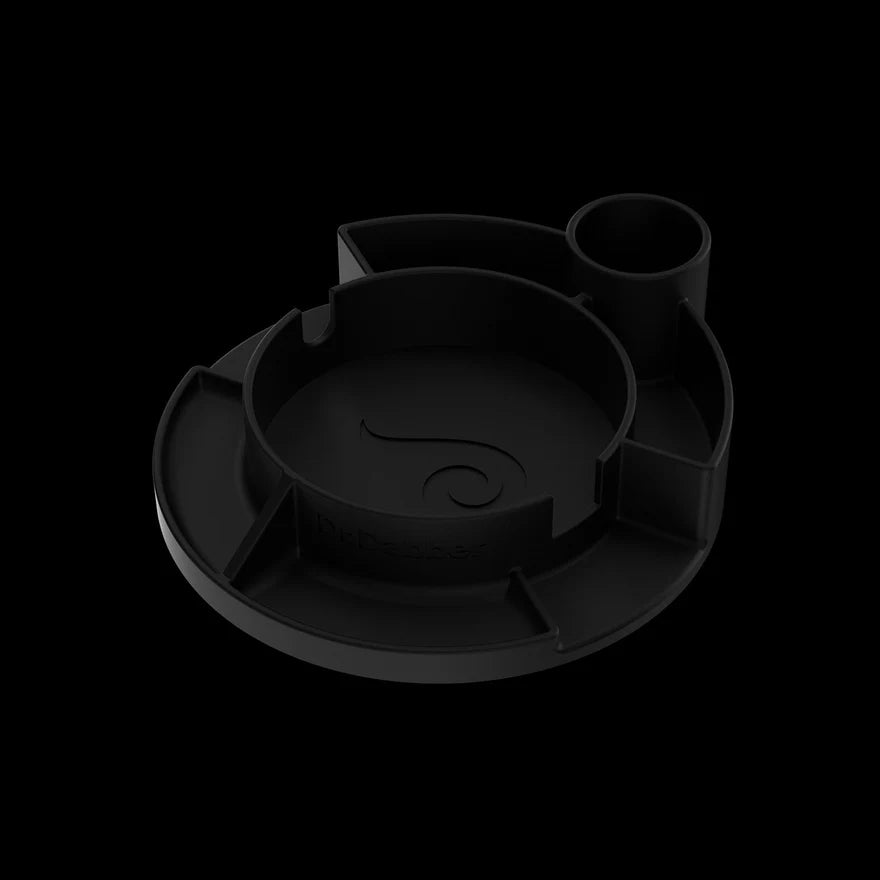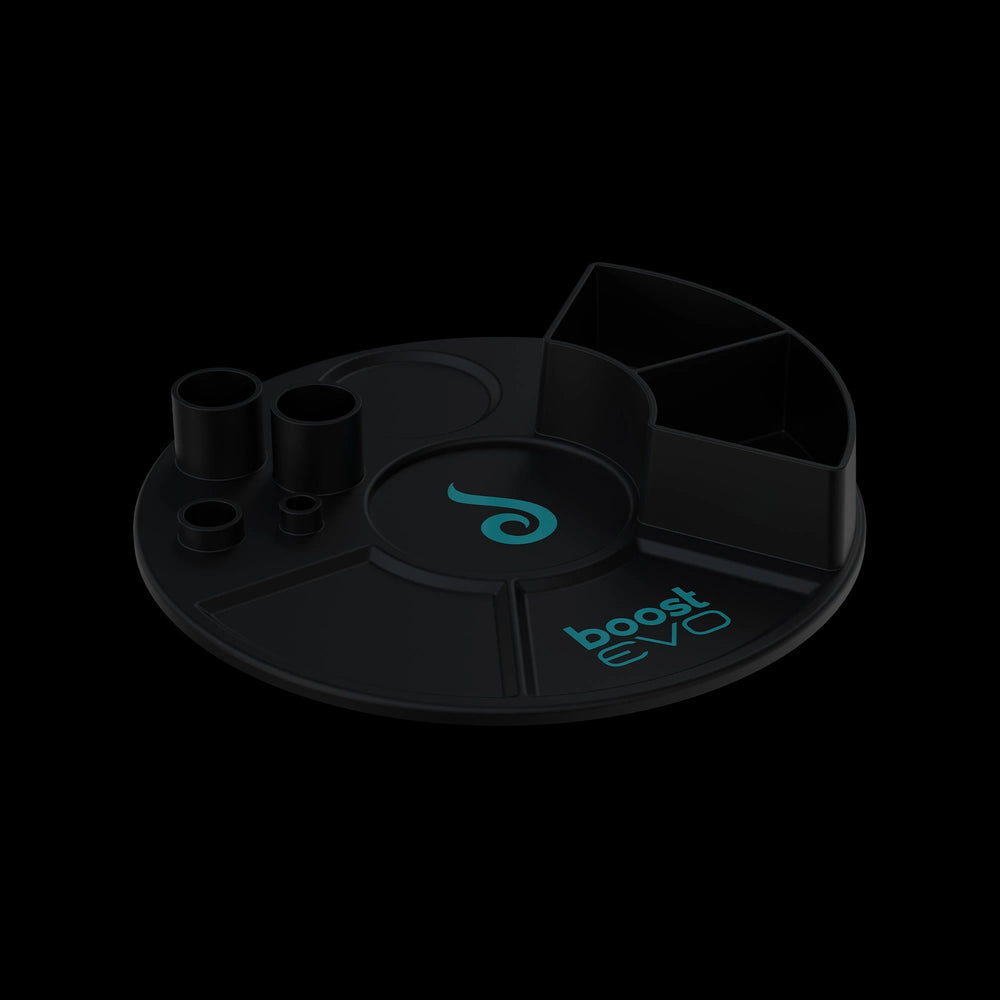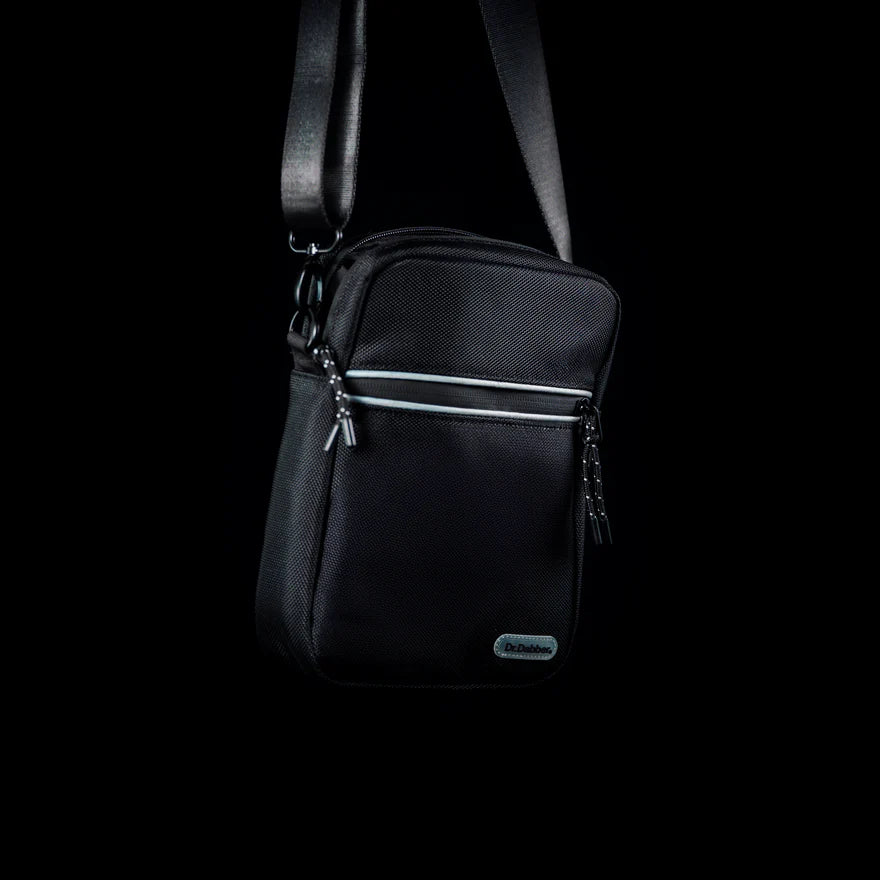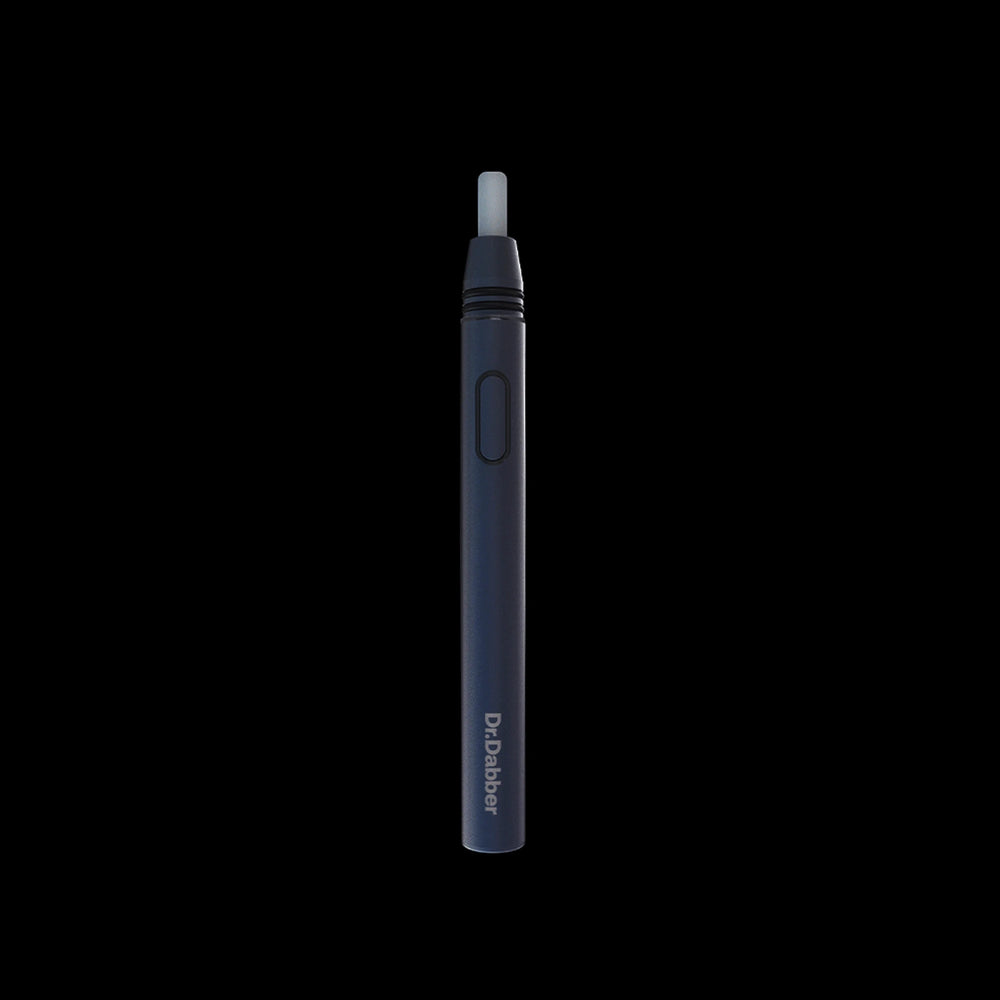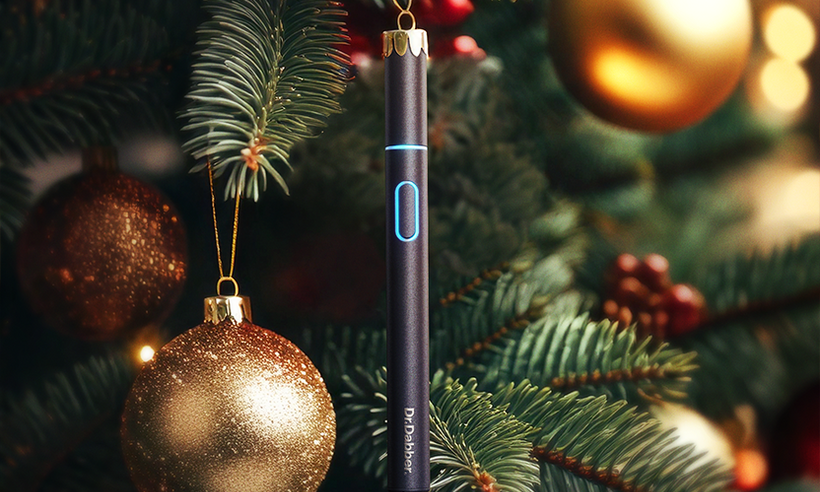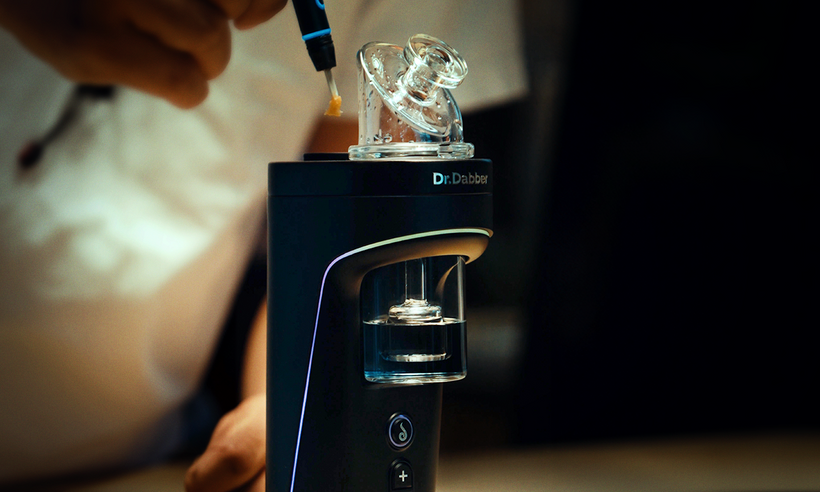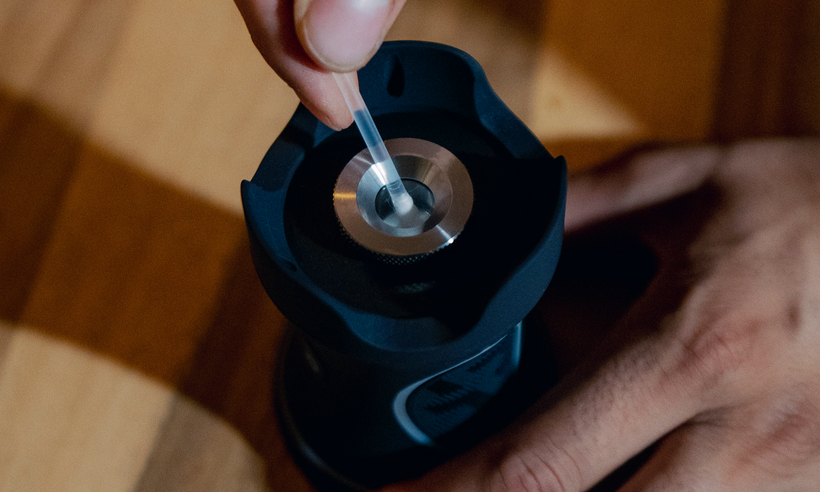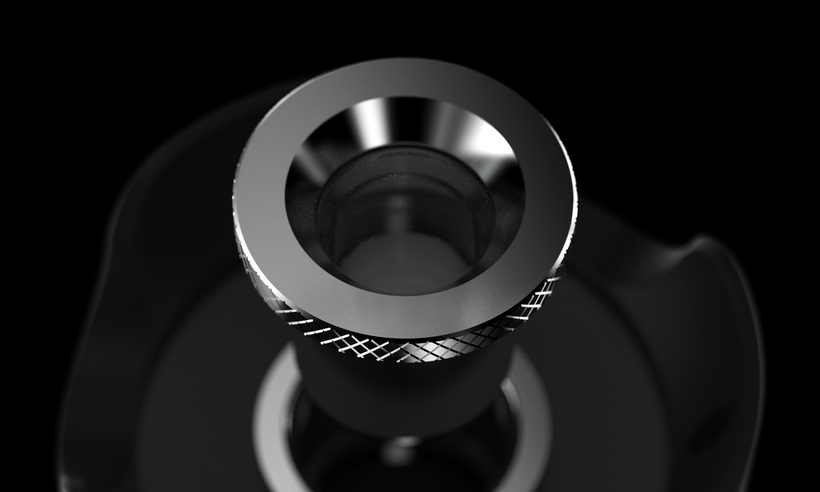Your cart is empty.
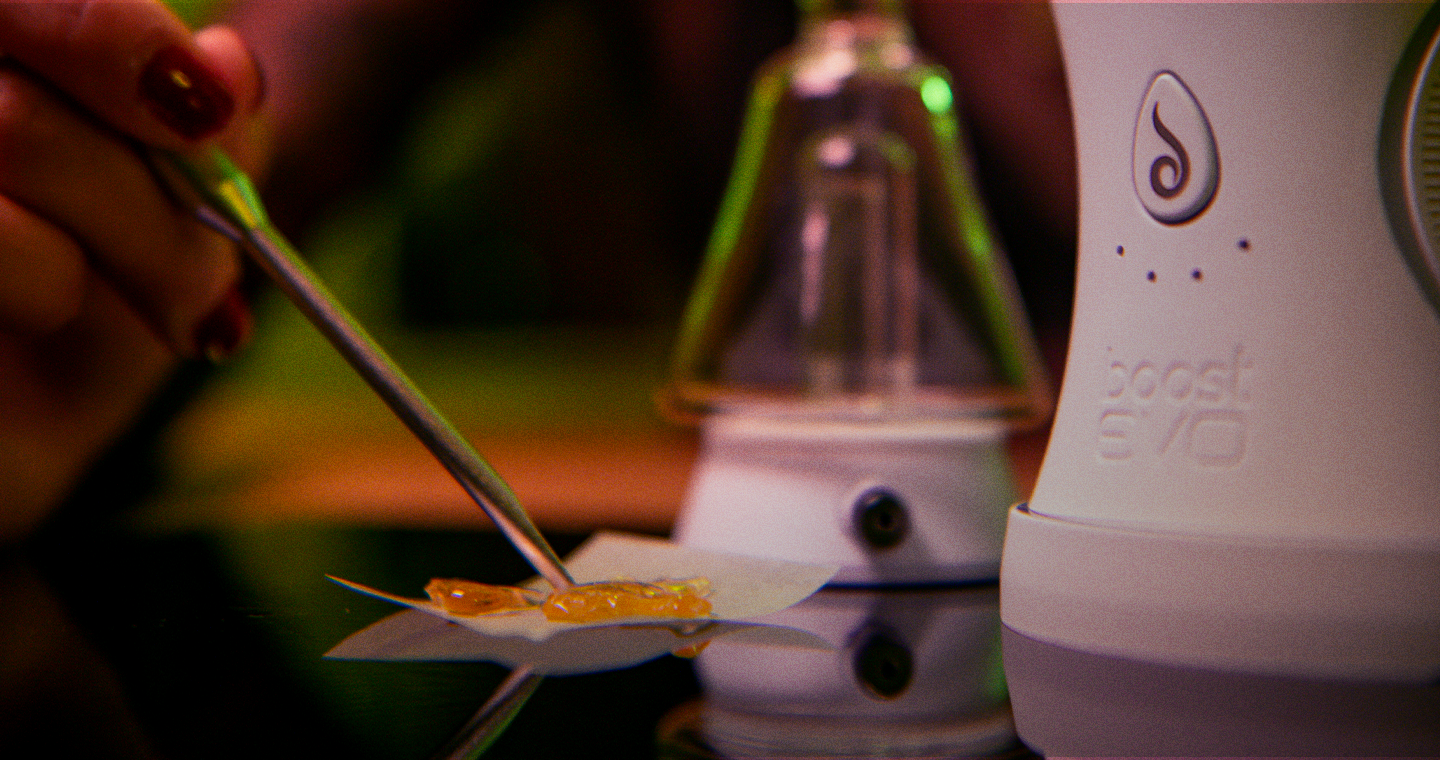
If you’re brand new to dabbing, it can be a confusing new world. There are all kinds of gear to get straight, and different types of concentrates you can use. In this guide, we’ll focus mostly on different wax strains and the best kind of dabs for different applications. We’ll also look at other types of concentrates, and how they’re extracted. Let’s take a closer look!
What is Dabbing?
Dabbing is the use of a dab rig or other device to consume cannabis concentrates and other extracts. The concentrate wax is then placed into a dab rig or dab. Inside the dab’s chamber, the concentrate is heated to anywhere between 400 and 600 degrees, and sometimes higher. By contrast, a dry flower vaporizer typically runs at around 350 degrees.
So, what do dabs look like? There are a variety of machines, from large dabbing rigs to smaller dab pens. Full-sized dab rigs look a lot like a bong. There’s a glass chamber with water inside, some tubing, and a mouthpiece. However, instead of a bowl for flower, there’s a nail, which is heated with a torch to the appropriate temperature.
Some rigs, like Dr. Dabber’s, are electronically operated, which gives you better temperature control and reliability. This is almost always the case for handheld dab pens, which look similar to ordinary vape pens.
You may also be wondering, what is the dabs’ origin? People use the word “dabs” because of the texture and the way you load the concentrate. Most concentrates are tacky and need to be “dabbed” onto the nail or into the chamber.
Cannabis Concentrates, Extracts, & Dabs | What’s the Difference?
For the uninitiated, the terms “concentrate, “extract,” and “dab” might seem interchangeable. They’re different things.
To begin with, extracts and dabs are both types of concentrate. A concentrate is any cannabis-derived product that’s more potent than the original bud. In other words, it has the highest levels of THC, CBD, and other cannabinoids.
Extraction uses a chemical process to achieve this concentration. This begins with the trichomes, which are the colorful, fibrous, crystalline bits that contain the THC and CBD, as well as terpenes and flavor compounds.
We’ll talk in a minute about different extraction methods. But depending on the method, you end up with different strains of wax, different types of shatter, and other compounds. These can range from oily to crystalline, with different types of wax concentrate in-between.
What all of these extracts have in common is that they’re extremely concentrated. They contain only the compounds from the trichomes, with none of the surrounding plant material.
But what are dabs made of? As it turns out, the most popular way to consume extracts is through dabbing. The best type of concentrate to dab is any of the grades of wax concentrates, but shatter and oil can also be consumed this way. Any type of concentrate that’s consumed by dabbing can also be called a dab.
That said, some types of concentrate and extracts are not suitable for dabbing. Kief and hash, for instance, contain a lot of plant material and are best used for smoking, or with a traditional dry herb vape. Tinctures, meanwhile, are alcohol-based, and will only burn if they’re heated. They’re meant to be taken orally.
One interesting case is the case of a pre-loaded vape cartridge. These cartridges are made from a concentrate, but the material is then diluted. This reduces the potency, so it’s more similar to smoking dry herb than to the intense experience of a dab. At the same time, the vaping material is still derived from an original concentrate, which is in turn derived from the trichomes of cannabis buds.
What About Oil & Hash?
“Oil” and “hash” are terms that confuse some people, because they have multiple meanings. Depending on the context, they can refer to any number of extracts or specific types.
For example, the cannabis community celebrates Oil Day on July 10th, but it’s not just a celebration of cannabis oil. It’s a celebration of all cannabis extracts. Similarly, people will often refer to dab extracts like wax and shatter as “hash.”
At the same time, cannabis oil is a specific type of extract with an oily consistency. Hash is refined cannabis, derived either from compressed kief or from a bubble hash method.
What are the Different Types of Wax Dabs?

Almost all types of dabs are made by using a chemical solvent to extract the resin from the trichomes on the dry herb. Butane and propane are the most common solvents, but there are other options as well. The process is performed in a laboratory by trained chemists, and the solvents are removed from the final product. Solventless extracts are available, but these dab types are expensive and harder to find.
For safety reasons, it’s important to buy extracts on the legal market. Black market extracts are produced in unlicensed labs with no oversight or safety standards. You could end up with solvents and other chemicals in your dabbing product. Legal dab products are tested and regulated, and a batch will be thrown out if residual solvent levels are too high.
Cannabis Oil
Cannabis oil, sometimes called distillate, is a thick, oily liquid. Because it’s so runny, it’s not the best material for dabbing. However, it’s commonly used in vape cartridges, and it’s great for cooking edibles. Oils are also a good base for isolating particular cannabinoids.
Wax
Wax is a catch-all term for several different types of dabs that are soft and pliable. This includes several grades and consistencies, such as budder, sugar wax, crumble, and honeycomb. It’s most commonly extracted via a butane extraction method, and it’s very versatile. In addition to dabbing, waxes can be mixed into joints, blunts, or bowls to boost their potency.
Budder
Budder has a reputation as the cleanest concentrate available, as well as one of the most potent. On average, you can expect an average of 90% THC and 99% purity. The production process is labor-intensive since it has to be whipped repeatedly during preparation. The end product is a cream or gold-colored material that has the same consistency as butter. Then again, because of the labor involved, as well as the incredible potency, budder is more expensive than most other concentrates.
Sugar Wax
Sugar wax, or sugar, is a crystalline wax that feels like wet, sticky sugar that hasn’t been dissolved. It’s looser than budder, without the same creamy consistency. Sugar was first created by accident when other extracts were left out during production, and condensation caused them to crystalize. But thanks to its easy-to-load consistency, it soon became popular in its own right.
Crumble
Crumble is a loose, dry extract that breaks apart easily when handled. It’s normally yellow, although it’s not all that uncommon to find a dark dab wax, too. Because it breaks up so easily, it’s harder to handle. On the plus side, you can get good potency for a relatively cheap price.
You might be surprised to learn that crumble is produced the same way as shatter up to a certain point. But at the end of the process, it stays in the vacuum oven longer. This is why it’s so dry and crumbly. However, the extra-low moisture level makes it virtually impervious to mold contamination.
Honeycomb
Honeycomb is a similar type of wax to crumble. The two are so similar this is one of the more controversial dab names; many people will say these are even different dabs. The main thing that makes honeycomb unique is its porous, cavity-filled appearance. When touched with a dab tool, it normally falls apart the same way crumble does, and can then be loaded.
Pull ‘n’ Snap (Taffy)
Pull ‘n’ snap, also known as taffy, is a flat concentrate with a glossy appearance, that comes in a variety of shades. It looks similar to shatter, but it handles quite differently. Instead of breaking into pieces, it’s like a piece of saltwater taffy. This makes it easy to work with at room temperature. Be warned, though; in warm temperatures, it can get sticky and messy. It’s important to store pull ‘n’ snap at cooler temperatures to avoid this.
Shatter
Shatter is one of the most famous types of extract, because of its incredible purity. The perfect shatter is flat, solid, and almost clear. In practice, though, this is harder to achieve; during the production process, it’s difficult to keep the material from turning opaque. As a result, there are many types of shatter, and dispensaries often use different names of shatter for different grades. Lower grades of shatter can be yellow or even amber, although the darker color has little impact on the potency.
Crystalline
There are many types of dabbing extract, but crystalline is the most potent variety of all. This is extremely pure cannabinoid crystals, often sold as a single chunk, which can then be broken down. It can also be sold in its broken-down, powder form, which is white and extremely dense. Crystalline is expensive, but it’s prized for its purity.
Diamonds
So, do the dab extracts in your dabbing device have to be full-spectrum? Not always. Diamonds are similar to crystalline in their purity and crystal-like structure. But instead of being a full-spectrum extract, they’re made up of a single cannabinoid, such as THC or CBD. Due to their purity, the crystals can be shiny, much like a diamond.
Because diamonds are isolates, they have little, if any, flavor or terpenes. For this reason, people often mix them with terp sauce when dabbing them.
Rick Simpson Oil
Rick Simpson Oil (RSO), is a high-THC extract that’s one of the most frequently used for medicinal purposes. What makes it unique is that it’s made from female cannabis plants only, and only from plants with at least 20% THC content. Furthermore, both the buds and the leaves are used, so you’re extracting from the entire plant. The result is a high-THC concentrate with powerful psychoactive effects.
RSO can be dabbed, taken as tablets, or absorbed under the tongue. It’s most often used for micro-dosing, although higher doses can also be taken.
Live Resin
Live resin is unique because of the unusual extraction process. From the moment the plants are harvested, they’re frozen, and they’re kept below freezing until the final product has been produced. Live resin has a thick, wasabi sauce-like consistency, making it very easy to work with. And because of the extraction process, the resin has a higher level of terpenes, with a rich flavor and aroma.
Terp Sauce
Terp sauce, sometimes just called “sauce,” is an extraction of cannabinoids with an extremely high level of terpenes. It’s extremely flavorful, and has a gravy-like consistency, although it often contains small granular crystals. The color can range from amber to a soft yellow.
Other Popular Concentrates
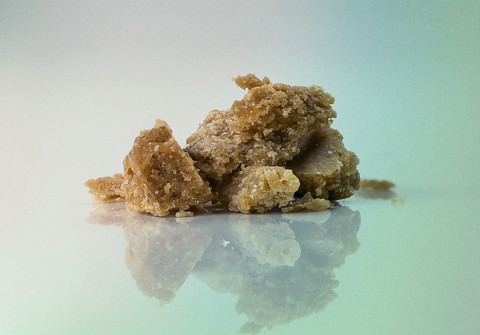
Not all concentrates are made via chemical extraction. In many cases, you can get excellent results with simple physical and temperature-based methods. The process tends to be more involved, and the prices are higher, but many people perceive the product as cleaner.
Dry-Sift Hash
Dry-sift hash is made by physically shaking and sifting dry herb, and selecting only the finest particles. These will be powdered trichomes, along with some fine bits of plant matter. This is kief, the same material you’ll collect in the bottom of a three-level grinder.
To produce hash, the kief is simply pressed into a pellet, sometimes with a bit of resin to make it sticky. It’s possible to dab hash, but it’s more often used for smoking.
Bubble Hash
Bubble hash is a higher grade of hash than dry-sift. Cannabis buds are placed in an ice water bath and left to chill. After a few minutes, the bath is agitated, which breaks off frozen trichomes, while leaving the plant material almost entirely intact. The water is then filtered through multiple mesh bags to remove any remaining plant matter.
There are several grades of hash, depending on the plant matter content. The highest grade is called “full melt,” because it eventually melts away to nothing when it’s consumed.
Rosin
Rosin is the most popular solventless extract for dabbers. Cannabis buds are pressed between a set of hot metal plates, which are put under extreme pressure. This extracts ail, which cools down and congeals into a tacky resin. In addition to dabbing, rosin is also used in high-potency vape cartridges.
Nug Run vs. Trim Run Wax Concentrates
When the concentrate is prepared, it’s typically prepared with the cannabis buds, known as “nuggets,” or “nugs.” While other parts of the plant have some amount of cannabinoids and terpenes, the vast majority of these are located in the buds. In the nug run, a facility is producing extracts from these high-potency parts of the plant.
Nug run extracts are potent and flavorful. If you’re used to the flavor and overtones of a high-quality herb, this is the only way to dab. These extracts cost more than others, but you’ll notice the difference. This is especially true for everyday dabbers, who are going to want the best quality extract possible.
That said, there are other parts of the cannabis plant that are left over. After the nug run, a producer still has leaves, stems, trimmings, and a few smaller nuggets. If the producer is making various types of cannabis concentrates, they might even have several types of herbs mixed.
It would be a shame to let all that go to waste, so dabbing manufacturers will perform a second production run, using all of these leftover plant materials. The resulting extracts are known as “trim run” extracts.
Trim run extracts aren’t as potent as nug run extracts. The wax, oil, or resin, might have the same consistency, but it won’t have the same levels of THC, CBD, or other cannabinoids as other concentrates. We’re not saying that these extracts are weak; casual dabbers and weekend tokers will do just fine with them.
The main difference between trim run and nug run extracts is the taste. The nug run is richer in terpenes and has a more robust, aromatic flavor. The trim run, on the other hand, has much higher levels of chlorophyll. This can add an unpleasant spicy note to your dab, which some people find off-putting.
The Extraction Process & How Concentrates Are Made?
So, how do you take a bunch of cannabis buds and turn them into high-quality extracts and concentrates? There are several different methods. Here’s an overview of some of the most common ways that extracts are made.
Butane Hash Oil Extraction
Butane extraction is the most common method used to produce a variety of concentrates, from oil to wax to some types of shatter. If you’re buying crumble, taffy, or budder, there’s a good chance it was made via this method.
The process itself is complicated and involves first spraying the plants with butane, then using a reactant to remove the butane from the resulting material. Depending on the exact process used, you can end up with different kinds of extracts.
When done correctly, the butane extraction method leaves you with only cannabinoids and terpenes. There are no residual chemicals, and there’s no plant matter in your concentrate.
Supercritical CO2 Extraction
Supercritical CO2 extraction is used to create the highest grades of shatter. Because CO2 is so cold, it does an optimal job of extracting flavors as well as cannabinoids. The plant CO2 is allowed to evaporate away, leaving you with a pure cannabis extract. The ideal result is a flat, crystalline sheet that’s clear or light amber, and rock-solid at room temperature.
Acetone & Alcohol Extraction
Acetone and alcohol extraction is used to create oils and waxes that are more flavorful than those obtained via butane hash oil extraction. The cannabis bud is first soaked in acetone, after which the plant matter is removed. Alcohol is then used to remove the acetone from the mixture.
This method can produce some very high-quality product. That said, because it’s superficially easy to do, a lot of black market extracts are made this way. Be careful about waxes that have a chemical odor – this can be caused by incomplete removal of acetone during extraction. Dabbing acetone is hazardous to yourself.
Water & Ice Extraction
Water and ice extraction are most often used for hash. However, with a little heat afterward, it can also be used to produce ice wax. This is the same process we already discussed for bubble hash, which uses an ice water bath and a series of mesh filters. The process is time-consuming and difficult, so the resulting product tends to cost a bit more.
The highest quality product will come out light in color, almost like a stick of butter. Darker-colored extracts contain more plant matter, which means you’ll be getting unwanted flavors and other contaminants. You’ll also get better results with a Sativa since Indica strains tend to leave more plant matter. The highest-quality waxes and hashes are known as “full melt,” because they burn away cleanly, leaving virtually zero ash.
Dry Ice Extraction
Dry ice extraction is similar to water and ice extraction in that it relies on cold temperatures to freeze the trichomes. However, it’s done with dry ice, which is shaken with plant material in a bag. The resulting dry powder is then sorted through a series of screens to produce a pure product.
Because dry ice is so much colder than ice water, the trichomes freeze faster and harder and break off more cleanly. There’s also no water involved, which makes the process cleaner. The resulting powder should be gold or rich cream and melts easily when heat is applied.
Dry Sieving
Dry sieving is the oldest and easiest method of creating a concentrate. If you scrape out the bottom part of a three-chamber grinder, you’re collecting the result of dry sieving.
Of course, commercial-grade dry sieving is more complicated than using your typical kief catcher. A professional producer will run their product through several layers of screen, to further remove plant matter and purify the product as far as possible. You can do this yourself at home if you want to put in the effort.
The purest dry sieved concentrate will be pale gold. A low-grade product, like the kief you collect at home, will still have a lot of green to the color.
What Supplies Do I Need?

Dabbing is without a doubt the most efficient way of consuming cannabis. If you want to get stoned with just a puff or two, there’s no substitute. It’s also fun and interesting. You get to use some new equipment and tools, play with different options, and find out what works for you.
That said, there are some things you’ll want to own before you start dabbing away. Let’s take a look at some of these essentials.
Dab Rig
The first thing you’re going to need is a dab rig. This can be a little dabbing pen or a larger, full-sized rig. Make sure to choose one that’s designed for concentrates – some are designed for dry herb, and won’t reach the high temperatures you need for proper dabbing. If you want a premium experience, check out some of Dr. Dabber’s high-quality dabbers.
Dabbing Tool
To load your wax or other concentrates, you’ll want to use a tool. The nail and chamber will be very hot, and you’ll burn yourself if you load the rig with your bare finger. A dabbing tool, or dab extractor, is made out of titanium, ceramic, quartz, or glass, and is designed to scoop up and load your concentrate safely.
A well-designed tool will also be wide enough to hold a lot of wax, so you can load all of your concentrates at once without dropping any.
Quartz Nail/Banger
To heat your extract, you’ll need a high-quality nail. These aren’t nails in the literal sense. They’re narrow, cone-shaped bowls with an open top for loading your extract. In this sense, they work like traditional bowls. You load your extract, then inhale the resulting vapor through the hole in the bowl. However, the air hole is typically located to the side, rather than at the bottom of the cone.
Nails are also used differently than a bowl. With a bowl or a bong, you apply heat directly to the herb inside. With a nail, you use a torch lighter to heat the nail itself. Then you load the concentrate, and the residual heat vaporizes it. In an electrical dab rig, the nail is heated to a precise temperature using an electrical element.
When it comes to materials, quartz is generally considered superior. It does a great job of heating your concentrate without robbing the flavor. Not only that, but it heats up quickly, and it’s not expensive. Even if your dab rig already came with a titanium nail, a good quality quartz nail is a solid investment.
Backup Titanium Nail
With all of that being said in favor of quartz, there are some good reasons to carry a titanium nail with you. The main benefit of titanium nails is that it’s easy to buy a universal model. If you buy a new dab rig, you can instantly drop the nail in. If you lose your quartz nail, you’ll have a reliable backup.
Speaking of which, while quartz is durable, titanium is far more durable. The last thing you want is to break your nail and not have a backup in place. No need to splurge here. Any universal titanium nail will make a reliable backup.
Dab Torch
Unless you’re using an electronic dab rig, you’re going to need some way to heat it; that’s where a dab torch comes in. A dab torch is a torch-style lighter that’s made to produce a ton of heat.
It’s important to look for one with a very high flame output. For this reason, it’s best to avoid kitchen torch lighters; they’re hot enough, but they don’t put out all that much flame. If at all possible, buy a high-quality butane lighter from your local head shop or dispensary. And when you refill, make sure you’re using a quality, brand-name butane that burns hot and clean.

Glass Storage Container
Once you’ve bought your concentrate, you’re going to need somewhere to keep it. Unfortunately, solid plastic containers don’t do a great job. Wax, shatter, and other cannabis concentrates simply won’t stay fresh for more than a week or so in a plastic container at room temperature.
A lot of manufacturers sell silicone containers, which are at least more flexible, and provide a little bit better seal. But terpenes can degrade the silicone, drying it out and causing it to become a brittle consistency.
For long-term storage, there’s no substitute for a quality glass container. Glass won’t contaminate your dabs with any unpleasant chemicals, and you can get a better seal around the top. Just make sure you’re storing your dabs in a cool, dry place, away from the sun.
It helps to use as small a container as possible, to minimize the air contact with your cannabis concentrate, which will make it last longer. If you want your dabs to last even longer, keep your container in the fridge.
Silicone on-the-go Container
A glass storage container is great for around the house. But when you’re on the go, you’ll probably want something a little more durable. That’s when a silicone container becomes a good idea.
The nice thing about silicone is that concentrate won’t stick to it. You can easily use your dabbing tool to scoop out concentrate, without worrying about it sticking to your container.
Along the same lines, you don’t have to worry about waste; because the wax won’t stick to your container, there’s not going to be a bunch of residue left inside.
Carb Cap
Strictly speaking, a carb cap isn’t essential; you can dab without one and still get just as much effect. But carb caps are a great tool for maximizing the potency of each puff, and for getting the most out of your concentrate investment.
A carb cap is a small cap made from ceramic, quartz, metal, or even-tempered glass. This cap is designed to cover the top of the dab nail and prevent vapor from escaping. All the vapor remains trapped inside the dab rig, even when you’re taking a moment between puffs.
By keeping your entire dab inside the system, a carb cap ensures that you’re getting the most powerful hits possible. You’ll get high faster, and with fewer puffs than before. Better yet, they also help reduce ash and carbon buildup.
You’re more likely to get clean, complete evaporation. Considering all these benefits, spending a few bucks on a quality carb cap is a no-brainer.
Reclaim Catcher
As wax vaporizes, bits of melted oil can drip through the bottom of the nail, and get caught in your rig. This isn’t a huge deal – you can just clean it out with a cotton swab and alcohol. But the product is no longer usable, and it ends up getting wasted. That doesn’t necessarily mean a weaker hit, but it does mean you’ll have to buy more concentrate sooner.
A reclaim catcher is yet another way to improve your dabbing efficiency and maximize your cannabis concentrate. This device is designed to sit inside your rig, just beneath the bowl, and collect any residue that drips through. You can then reuse that product at your convenience.
Dabbing Benefits
Before we wrap up, let’s talk about some of the pros and cons of dabbing, starting with the benefits. What is it about dabbing that’s superior to edibles or traditional smoking? Here are some of the benefits.
Dabbing is Potent
Whether you have a high tolerance or you just want the most powerful hits, dabbing has a lot more punch than smoking ordinary dry herb. There’s just no other way to get this high this quickly.
Dabbing Hits Quickly
When you dab, the cannabinoids enter your bloodstream within seconds, providing near-instant effects.
Dabbing is Considered to be Healthier
Look, there are obvious downsides to putting anything other than air into your lungs. But when compared to smoking dry herb, dabbing has far less impact on the lungs. When you’re smoking cannabis, you’re burning a bunch of plant matter and other material that has no benefits whatsoever.
When you’re dabbing, you’re only inhaling the cannabinoids, terpenes, and other compounds in the concentrate.
Dabbing Tastes Better
If you already love the taste of cannabis, you’ll like the flavor of dabbing even more. Extracts include terpenes, which are what gives it the distinctive taste and aroma. But with an extract, you’re not getting the same “burnt” flavor you get from smoking dry herb.
Dabbing Drawbacks

As you can see, there are plenty of benefits to dabbing. But there are also some downsides that any potential dabber should be aware of before they take their first puff. Here are some things to think about before you indulge.
Dabbing Might be too Potent
If you’re thinking of dabbing, you probably already have experience smoking cannabis bud. Today’s most popular strains of cannabis have a potency of between 15% and 25%. By comparison, concentrates can contain from 60% THC up to a mind-blowing 90%. That’s an incredible difference in potency, and it takes many first-time dabbers by surprise.
If you consume more THC than you’re comfortable with, it can lead to some uncomfortable effects. You may feel sensations of paranoia, as well as lightheadedness and disorientation. If you’ve never dabbed before, start with a small quantity. If you’re not satisfied after a few minutes, take another puff, but do it one at a time. Remember there’s no rush.
If you do find that your extract is too potent, there’s no need to panic. It’s not fun to ride out the intense effects, but no one has ever overdosed on cannabis extract. Put on some soothing music, close your eyes, and breathe. The feelings will subside soon enough.
Potential for Contamination
The most popular, solvent extraction methods have the potential to leave acetone and other nasty chemicals behind. Always buy your extract from an approved, lab-tested source. It might be cheaper to buy from some guy at a gas station, but you have no way of testing the product’s purity.
Potential for Burns
Dabbing nails can get very hot, sometimes as high as 600 degrees or more. If you accidentally touch one, even very briefly, you can get a nasty burn. Then again, you can significantly mitigate the risk by investing in a good-quality electric dab rig.
Final Thoughts

As you can see, Dr. Dabber breaks down plenty of ways to enjoy your dab. From smooth, potent budder to easy-to-load shatter, there are plenty of different waxes to load into your dab. The key question is: what does dabbing look like to you?
Do you want a drier wax that’s easier to manage? Or do you want a tackier wax that’s richer and more powerful? Do you care about flavor and aroma, or are those factors secondary to your dab’s potency?
By knowing the answers to those questions, you’ll quickly be able to zero in on the ideal cannabis concentrate.









